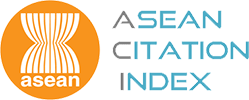“NEW REGIONALISM” IN THE MIDDLE EAST AND NORTH AFRICA REGION (MENA): AN EVALUATION ON ITS CHARACTERISTICS
DOI:
https://doi.org/10.32890/jis2025.21.2.10Abstrak
In the late twentieth century, regional dynamics in international relations reemerged, sparking a renewed interest, as evidenced by the emergence of the term “new regionalism.” The global economy has become increasingly defined by regionalism. Both developed and developing countries are turning to regional cooperation as a vital tool to counter global challenges and issues. This study aims to analyse the features of “new regionalism” in the context of the Middle East and North Africa region (MENA). The study begins by identifying and explaining the key features of “new regionalism” that facilitate cooperation between countries. It then evaluates and examines the following features of regionalism in the MENA region: 1) geographical proximity; 2) trade liberalisation; 3) economic interdependence; 4) non-discrimination; and 5) unilateral reform. To analyse the current status of regionalism in the MENA region and clarify the level and extent of cooperation, the research method proposes utilising a set of indicators to refer to each of these features. The research findings are summarised below: Despite some encouraging signs of regional cooperation in the MENA region, it is distinguished by slow free trade, a weak regional import-export process, unclear unilateral reform, and a lack of collaboration.























